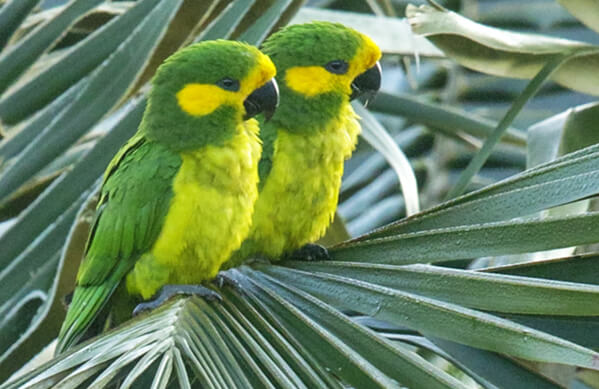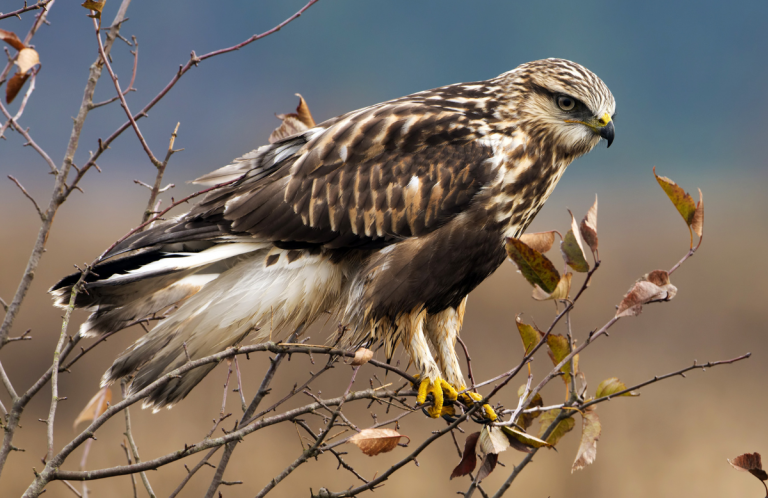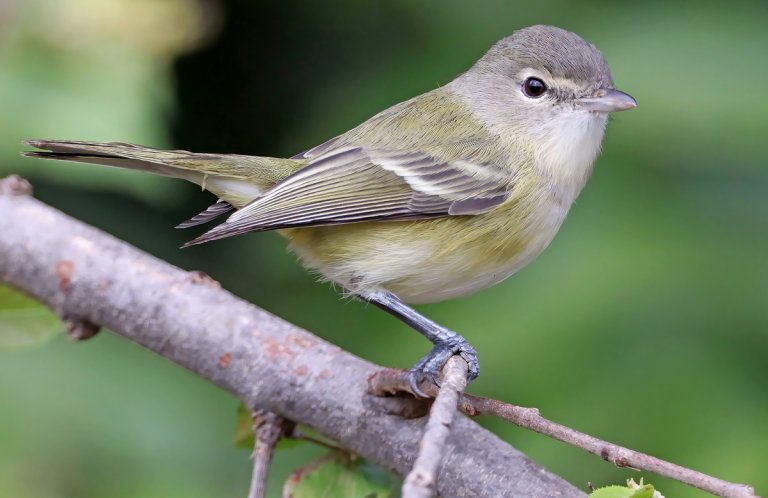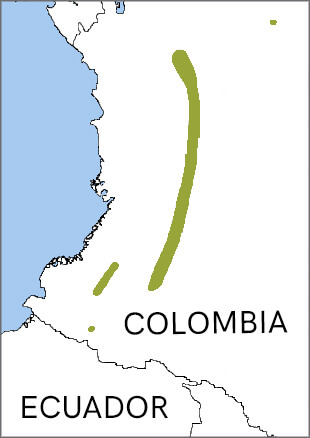 The colorful, elusive Yellow-eared Parrot was considered by many to be a lost species until April 1999, when a group of researchers sponsored by ABC and Fundación Loro Parque discovered a group of 81 in the misty heights of the Colombian Andes.
The colorful, elusive Yellow-eared Parrot was considered by many to be a lost species until April 1999, when a group of researchers sponsored by ABC and Fundación Loro Parque discovered a group of 81 in the misty heights of the Colombian Andes.
Since this rediscovery, Yellow-eared Parrot numbers have rebounded due to intensive conservation, but like the Fuertes's Parrot and Santa Marta Parakeet, this bird remains one of the most threatened parrot species in Colombia.
The Parrot and the Palm
In most areas where it is found, the Yellow-eared Parrot relies on the wax palm Ceroxylon quindiuense for its fruit, and to provide nest and roosting sites. This impressive palm, the national tree of Colombia, grows mainly in the central and eastern Andes. However, local tradition was almost its undoing, as wax palm fronds were traditionally cut in large numbers each year for use in Palm Sunday celebrations and processions. Additionally, the slow-growing palms were logged for wax and wood at unsustainable rates, and cattle ate young saplings and palm fruit. As the wax palm became increasingly scarce, so did the Yellow-eared Parrot.
After the bird's rediscovery, Fundación ProAves (which was formed around the same time to protect this species) began an intensive campaign to ban the use of wax palm leaves in religious ceremonies, encouraging celebrants to substitute the foliage of a common introduced palm instead. This campaign was also supported by the Vatican. Reduced demand for wax palm fronds allowed these majestic trees to recover.
In 2009, a population of approximately 100 birds was located in Colombia at a lower elevation, in foothill forest. There, the birds rely upon a different type of palm called the Palma Choapo or Bombona.
Feeding on the Fly
Like other parrots such as the Great Green Macaw and Lear's Macaw (another species that depends on palm fruit), the Yellow-eared Parrot may wander widely in search of food, usually in small to mid-sized flocks. Although wax palm is favored, Yellow-eared Parrots also feed on buds, seeds, and fruits of other palms and native trees, as well as ferns. These birds are most noisy and conspicuous at daybreak as they fly from their communal night roosts to feeding areas.
For a nest site, a pair of Yellow-eared Parrots will use a natural cavity in a large, decaying wax palm, or gouge one out of a broken-topped palm snag, usually 80 to 100 feet high. This parrot also readily uses artificial nest boxes, as do the Blue-throated Macaw and Thick-billed Parrot. ProAves has supplemented natural nesting cavities with artificial nest boxes, which has helped its recovery.
Breeding pairs of Yellow-eared Parrots are sometimes assisted by younger "nest helpers" while raising their chicks.
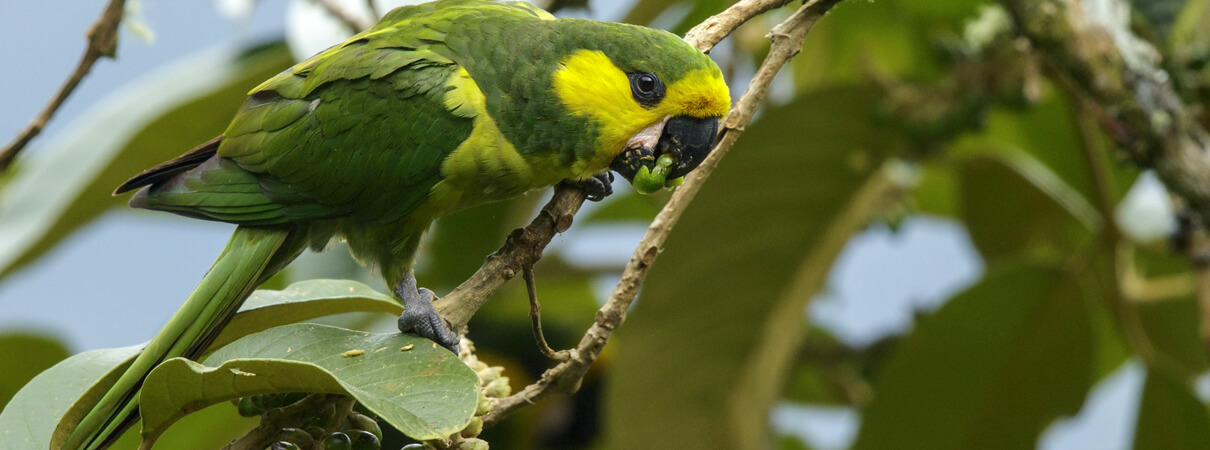
Yellow-eared Parrot by Glenn Bartley
Conservation in the Cloud Forest
The Yellow-eared Parrot almost disappeared due to habitat loss – over 90 percent of the cloud forest in Colombia has been cleared for farming or settlement, including the wax palms so essential to this species' survival. Although it once was found in Ecuador as well as Colombia, the Yellow-eared Parrot hasn't been seen in that country for many years.
Fortunately, in Colombia, conservation efforts centered on saving and restoring the Yellow-eared Parrot's habitat and educating local people have been successful. These efforts included media campaigns, festivals, ecological workshops, and even a brightly painted "parrot bus” — a mobile classroom that visited hundreds of schools around the country, spreading the message of parrot conservation to more than 150,000 children.
In 2009, ABC, ProAves, and other conservation groups established the Threatened Parrot Corridor, which includes four reserves that protect over 18,000 acres of key habitat for endangered parrots including the Yellow-eared Parrot, Fuertes's (or Indigo-winged) Parrot, Rusty-faced Parrot, Golden-plumed Parakeet, and Rufous-fronted Parakeet.
By 2010, the Yellow-eared Parrot population had climbed to more than 1,000 individuals, and the species was downlisted from Critically Endangered to Endangered on the IUCN Red List of Threatened Species. Numbers continue to increase, and birders keen on sighting the Yellow-eared Parrot can find a number of tour operators that visit its habitat in Colombia.
Donate to support ABC's conservation mission!





































